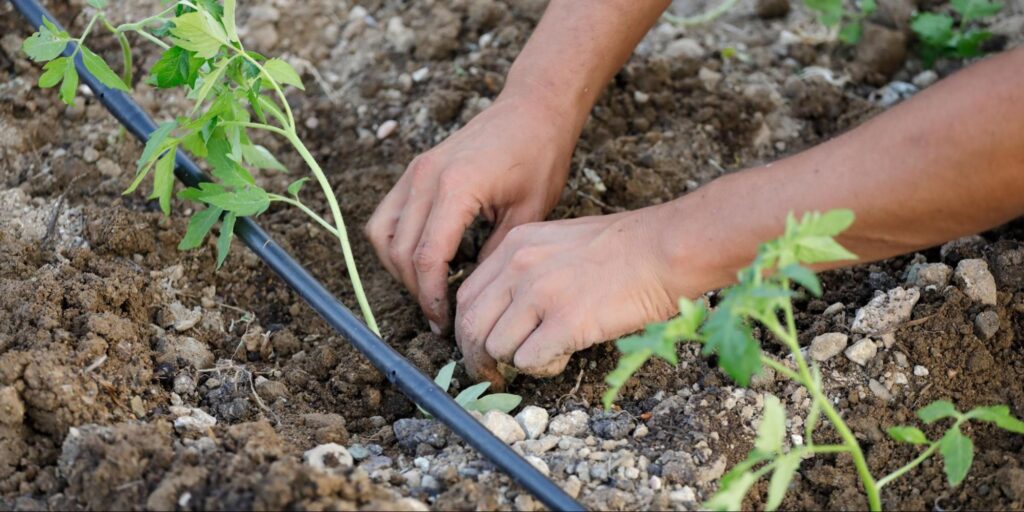6 Advantages of Fertigation Through Autonomous Drip Irrigation System
In the last decades, the climate has changed dramatically. With extreme temperatures during the summer months and a lack of rainfall, farmers have no other choice but to adapt by finding new ways to bring water to their crops.
For crop cultivation with springtime and summertime crop cycles, proper irrigation and fertigation are crucial. Since the water usage needs to be well planned, drip irrigation systems help with the smart distribution of water and fertilizers. However, unsuitable fertilizer and water management can cause significant environmental damage, and that’s why agriculture has to focus on producing food with minimal environmental impact.
The automated irrigation system is an innovative technology that aims to distribute water and provide plants with the necessary nutrients needed for growth, as well as pesticides and herbicides.
Using Fertigation with Different Watering Systems
Farmers may often believe the widespread use of robust sprinkling machines is the only way to water their crops successfully. Although these systems are improving farm irrigation efficiency, they still require an extensive workforce, they use a lot of energy, don’t optimize water usage, and continue to be rather costly solutions.
The overall accuracy and fertilization cannot be applied with precision since the sprinkled water quickly evaporates or doesn’t reach the root. The wet leaves become an easy target for fungus and bacteria, and in the case of loamy soil, the crust can appear and prevent new plants from forming.
Water usage increased in the last decade and its consumption needs to be managed and controlled for farmers who don’t have access to large amounts of water in close proximity to the crops.
With autonomous drip irrigation systems, water usage can easily be controlled using sensors that show farmers the current moisture levels in the soil so they can make well-informed decisions. Drip irrigation combined with fertigation brings all nutrients straight to the plant roots and provides a constant water supply.
6 Advantages of Fertigation Through Drip Irrigation

Micro-irrigation or drip irrigation offers new solutions for decade-old problems. Once farmers created irrigation sectors on their fields and placed irrigation pipes, the focus was to adapt the water fertilizing system to a specific type of plant on the field. Then, using its knowledge about particular types of crops, farmers can make calculations and efficiently manage hundreds of hectares.
Here are some advantages that fertigation through automated drip irrigation systems brings to the table:
1. Optimized water and fertilizer consumption
Farmers and field operators can now optimize fertigation according to the type of plant and its requirements, soil structure, and season. As resources like water are precious, using the right amount is crucial so that the water source wouldn’t get exhausted in just a few years. Using the right amount of fertilizer also allows for better control of resources, and in the long run – it saves money.
2. Lower energy consumption
Fertilizer distributed through drip irrigation doesn’t require an additional workforce, as it uses existing infrastructure to move from storage directly to the plant. The control unit operates by closing and opening the valves directing the water and fertilizer to a selected sector. In case of any flow defect, it’s possible to stop the system and avoid any potential damage.
3. Optimal seasonal yield
Using Smart watering autonomous drip irrigation systems, farmers ensure that their plants always have the right amount of water and fertilizer around their roots. This way, they can plan the number of crops they’ll have in one season.
4. High quality crops
Farmers can adjust the fertigation according to a number of factors. For example, they can change the type of fertilizers, insecticides, and pesticides according to information they get from the field. This way, only the necessary amount of resources will be used for a particular field.
5. Reduced nitrate losses
With drip irrigation that allows fertigation scheduling, farmers can achieve all environmental objectives and minimize nitrate losses. Fertigation optimization becomes possible with drip irrigation systems where farmers can control the fertilizer levels in the water depending on the information the irrigation sensors provide them with.
6. Reduced plant disease risks
Fertilizers are often harmful for plant parts other than the root. For example, if different fertilizers get sprinkled across the plant’s leaves, they may fall victim to bacterial and fungus infections. At the same time, drip irrigation is less invasive than sprinklers, which prevents a layer of crust from forming on the soil surface. This crust may cause asphyxia in plants and stop them from growing as they should.

Fertigation Really Makes a Difference
High-performance fields require a lot of work. With the proper irrigation and fertigation system, farmers can avoid many problems related to plant development and maintain soil quality throughout the year. For anyone understanding how agriculture is changing, automated irrigation systems are a worthwhile investment.
Smart watering is devoted to watering solutions that support farmers in creating a healthy environment for their crops. Farmers that understand all the benefits that fertigation through autonomous drip irrigation brings.
Learn how you can upgrade your irrigation system today—give us a call and we’ll answer all your questions about modern farming that can change your life for the better.



